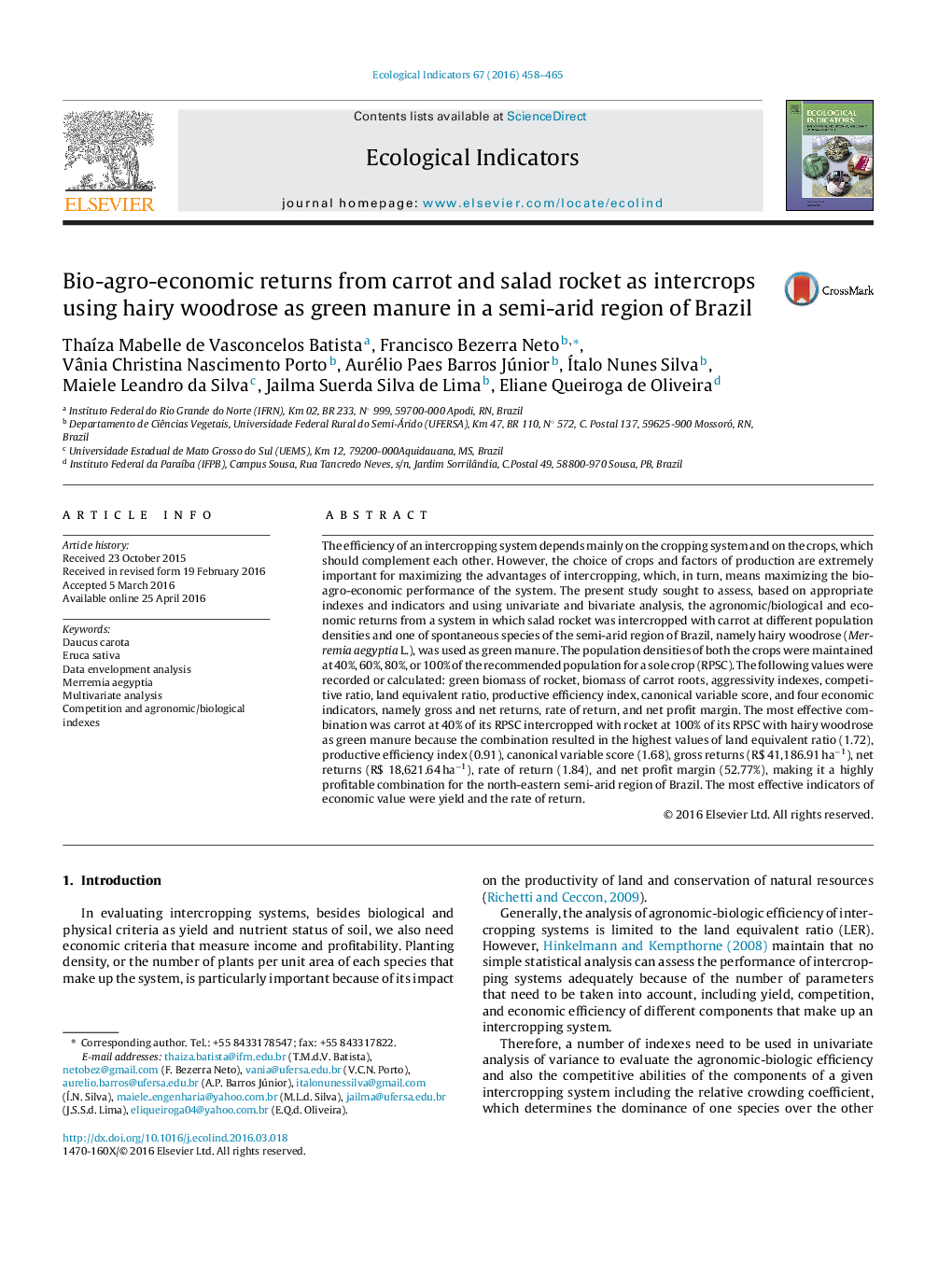| Article ID | Journal | Published Year | Pages | File Type |
|---|---|---|---|---|
| 4372892 | Ecological Indicators | 2016 | 8 Pages |
•Manipulation of population densities can increase bio-agro-economic returns in intercropping.•Bivariate analysis of variance and data envelopment are effective in discriminating returns.•The bio-agro-competition of vegetables intercropping can be translated in economic efficiency.
The efficiency of an intercropping system depends mainly on the cropping system and on the crops, which should complement each other. However, the choice of crops and factors of production are extremely important for maximizing the advantages of intercropping, which, in turn, means maximizing the bio-agro-economic performance of the system. The present study sought to assess, based on appropriate indexes and indicators and using univariate and bivariate analysis, the agronomic/biological and economic returns from a system in which salad rocket was intercropped with carrot at different population densities and one of spontaneous species of the semi-arid region of Brazil, namely hairy woodrose (Merremia aegyptia L.), was used as green manure. The population densities of both the crops were maintained at 40%, 60%, 80%, or 100% of the recommended population for a sole crop (RPSC). The following values were recorded or calculated: green biomass of rocket, biomass of carrot roots, aggressivity indexes, competitive ratio, land equivalent ratio, productive efficiency index, canonical variable score, and four economic indicators, namely gross and net returns, rate of return, and net profit margin. The most effective combination was carrot at 40% of its RPSC intercropped with rocket at 100% of its RPSC with hairy woodrose as green manure because the combination resulted in the highest values of land equivalent ratio (1.72), productive efficiency index (0.91), canonical variable score (1.68), gross returns (R$ 41,186.91 ha−1), net returns (R$ 18,621.64 ha−1), rate of return (1.84), and net profit margin (52.77%), making it a highly profitable combination for the north-eastern semi-arid region of Brazil. The most effective indicators of economic value were yield and the rate of return.
